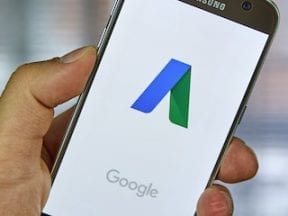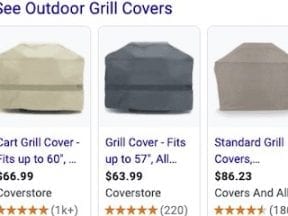Automated bids in Google Ads remove control from advertisers and rely on Google’s algorithm for cost and performance. Google applies a variety of signals to do this.
For manual bidding, advertisers can set bid modifiers by audience type, device, location, and time of day, as examples. But Google can automate bids by query, ad creative, apps, browser, language, operating system, and search partner. Automated bidding utilizes first- and third-party data and other signals not available to advertisers directly, such as in-market and affinity segments, session behavior, and search history.
Automated bidding, in short, saves time and increases efficiency, typically. Google offers seven automated bid options:
- Target cost per action.
- Target return on ad spend.
- Maximize conversions.
- Maximize conversion value.
- Enhanced cost per click.
- Maximize clicks.
- Target impression share.
Automated Bidding Options
Target cost per action optimizes for conversions while targeting a specific cost. It’s the most common automated-bid option, in my experience. You tell Google what you are willing to pay per conversion, and Google will bid accordingly. The strategy works best for campaigns with at least 15 conversions over the last 30 days. Google will recommend a target CPA for existing campaigns. For new campaigns, Google will recommend a CPA based on the account’s historical conversions. Advertisers can set maximum and minimum bid limits.
Pros:
- Bidding is optimized for your target CPA.
- Target CPAs are set at both the campaign and ad group levels.
Cons:
- This option needs minimum conversion data to perform effectively. The fewer conversions, the less data the system has to work with.
- Setting a very low target CPA can negate potential clicks. The best target CPA is 10 to 20 percent higher than the goal to allow for incremental clicks.
—
Target return on ad spend optimizes for conversion value while targeting a specific ad-spend return. Conversions must have assigned values, either static or dynamic. For ecommerce accounts, the conversion value is generally the purchase price. According to Google, the best results come when advertisers have experienced at least 50 conversions in the last 30 days.
Similar to target cost per action, Google will recommend a target ROAS for existing campaigns. For new campaigns, Google will recommend a target based on the account’s historical conversion data. Advertisers can set maximum and minimum bid limits.
Pros:
- Bidding is optimized around a target ROAS that you determine.
- Target ROAS can be set at both the campaign and ad group levels.
Cons:
- Target ROAS needs minimum conversion data to perform well. Fewer conversions means less data the system has to work with.
- Setting a target ROAS too high can negate potential clicks. In general, you should set a Target ROAS 10 to 20 percent lower than the goal to allow for incremental clicks.
—
Maximize conversions optimizes for the highest number of conversions regardless of the cost per acquisition. This strategy uses advanced machine learning to optimize bids automatically and offers auction-time bidding capabilities that tailor individual bids. In other words, Google generates clicks that are more likely to produce conversions. Be cautious, however, of your daily campaign budgets as this option tends to hit the thresholds. And it doesn’t include a maximum or minimum bid limit.
Pros:
- Bidding is optimized for conversions.
Cons:
- CPA may be higher than other campaigns since Google is focusing on the number of conversions and not the cost.
- Individual campaign spends tend to be higher as the full budgets are utilized, and there is no maximum bid limit.
—
Maximize conversion value optimizes for higher revenue regardless of the return on ad spend. Similar to maximize conversions, this strategy tends to consistently hit daily ad budget and doesn’t offer maximum or minimum bid limits. Advertisers must set up conversion tracking to use the option.
Pros:
- Bidding is optimized for the most valuable conversions.
- In general, revenue will increase.
Cons:
- Return on ad spend may be higher than other campaigns since Google is focusing on high-value conversions and not a cost.
- Individual campaign spends tend to be higher as the full budgets are utilized with no maximum bid limit.
—
Enhanced cost per click automatically adjusts your manual bids to maximize the number or value of conversions. It’s an option with manual cost-per-click bidding. Advertisers can still set bids, but Google will adjust depending on the likelihood of conversions. These adjustments are made after existing bid adjustments, such as location or device. ECPC is a good strategy for a new campaign as advertisers can set manual bids while allowing the system to adjust the cost for potential conversions.
Pros:
- Advertisers control bids and bid adjustments for the most part.
- Utilizes similar signals as target CPA and target ROAS.
Cons:
- ECPC isn’t as efficient as fully automating your bids.
- Average click costs may be higher than your assigned maximum click costs
—
Maximize clicks produces the most clicks possible for a given budget. It’s a good option for generating traffic quickly. Advertisers set the daily budget, and Google then determines the maximum bids for the most clicks. This strategy is helpful for launching a new product or service.
Pros:
- A quick and efficient way to garner clicks.
- You can set a maximum budget.
Cons:
- Doesn’t optimize for users most likely to convert.
- Can drain your daily budget quickly.
—
Target impression share automatically sets your bids to show your ad (i) on the absolute top of the search-result page, (ii) on the top of the page, or (iii) anywhere on the page. This option gives your ads extra exposure. Advertisers can target the impression share percentage, which is how often your ads appear when your keywords are searched. An impression share of 75 percent means your ads receive three-fourths of the available impressions. Advertisers can set a maximum per-click bid limit.
Pros:
- Advertisers control where their ads appear on search results.
- Ensures important keywords receive maximum exposure.
Cons:
- Optimizes for exposure rather than for conversions.
- Metrics such as CPA, ROAS, and conversion rate may decline.
Manual
Manual cost per click gives advertisers complete control over keyword bids and bid modifiers. Google will not make any adjustments.
Pros:
- Advertisers set the maximum per click costs.
- Google will not adjust keyword bids.
Cons:
- Advertisers cannot benefit from Google’s machine learning to automate bids in real-time.
- Manual bidding is far less efficient (and more time-consuming) than automated bidding.
Bid Modifiers
Many of the automated bidding tactics negate or reprioritize existing bid modifiers. Optmyzr, a pay-per-click tool, published a blog post with details on how each bid modifier is impacted.




